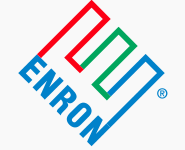A great number of us I imagine find ourselves employed by a publicly traded company, i.e one that the average investor can purchase partial ownership (via shares) in the company itself. Some of these large companies will offer ESPP, or employee stock purchase plans, which allow you, the employee, to participate in a program that will allow you to purchase stock. I myself have recently entered into this situation and thought it could be helpful to break it down and offer a YMF spin on it. Not employed by a public company? Keep reading, as you might be one day!
How does it all work?
To start with, you can’t just buy stock through this program at anytime; there are typically defined periods that you can participate and ultimately purchase stock. Most will occur twice a year, and mine for example is: 4/1-9/30 and 10/1 thru 3/31. That means on April 1st (no joke) and October 1st of each year, I will begin a new period and will have my paycheck deducted with my desired contributions. I’ll continue to have my funds withdrawn each paycheck until September 30 and March 31, at which time my cash will turn into shares! You can choose your own contribution election amount, typically anywhere from 1 to 15%, (mine is 10%). As mentioned, each paycheck, 10% of my salary will come out and be put in an escrow account at a brokerage (oftentimes Etrade). This will continue to occur throughout the period, until the end comes and we get to turn our cash into stock!
How does the purchase occur?
Although each plan will be a little different, there are two main characteristics of the plan: the discount and a look back. The discount is an actual discount from the purchase price of the stock. For instance, you might find your plan has a 10% discount with it. This means that if the stock is trading at $100, you’ll get to buy it at $90. A quick $10 profit for you! The second characteristic is a look back period. This allows you to get the benefit of a lower price. Typically this plays out in allowing you to purchase stock (not including the discount) at the lower of the price of the beginning of the end of the period. So if your company’s stock had a great period and increased in value, you’d be able to buy it for what it was back on April 1 or Oct 1. Nice! It’s also important to note that there aren’t tax benefits like participating in a 401(k) or anything. Also, there could be a restriction on how long you have to wait before selling the stock, probably like a year or so.
Why does the employer do this? Why should I participate?
Good question, why would an employer go through all this trouble and spend all this money (paying the discount and the look back)? There are a couple of reasons for sure; firstly, it’s a good way to attract talent, another benefit the company can offer. When comparing job options, a company with a ESPP might look more attractive. It also helps retain talent as well, by owning shares in your company, you might feel more attached to it, and wish to stay to help it grow. Why should you participate? Um, you’re able get a valuable asset at a discount. It might also help you work harder since you’ll be a part owner of the company, which might just help you perform better at work! #promotion
Any downsides? Why don’t I put all my money in it?
 had done so well leading up to the revelation that it was all basically a hoax that employees would not only participate in the ESPP, but also put their more of their money into the stock as well. When it all came crashing down, a lot of them lost basically everything.
had done so well leading up to the revelation that it was all basically a hoax that employees would not only participate in the ESPP, but also put their more of their money into the stock as well. When it all came crashing down, a lot of them lost basically everything.

 Personal Finances are certainly top of mind for many of us. If you're looking to get serious about improving your financial situation, we've got lots of great materials all over this site! Additionally, we realize that there's a lot of noise out there, and so we created PERSONAL FINANCIAL GUIDES focused on topics with all the info you need, and without any of the noise/ads/clickbait.
Personal Finances are certainly top of mind for many of us. If you're looking to get serious about improving your financial situation, we've got lots of great materials all over this site! Additionally, we realize that there's a lot of noise out there, and so we created PERSONAL FINANCIAL GUIDES focused on topics with all the info you need, and without any of the noise/ads/clickbait.
Like you said, it’s best not to put too many eggs in one basket. When your income and your investments/retirement/savings (in this case investment) are all tied up in the same institution, you could be doomed for failure. An example is someone I know that works for a bank, banks with that bank, and has nearly all his retirement and investments in stock for that bank. Very risky. This person could lose everything they’ve ever worked for at any time if the company is doing anything illegal or otherwise that brings it down. Think before you get excited about buying your own company—it’s better just to be content with them paying you and use your income to invest elsewhere! It’s my opinion that the discount is not worth the risk.